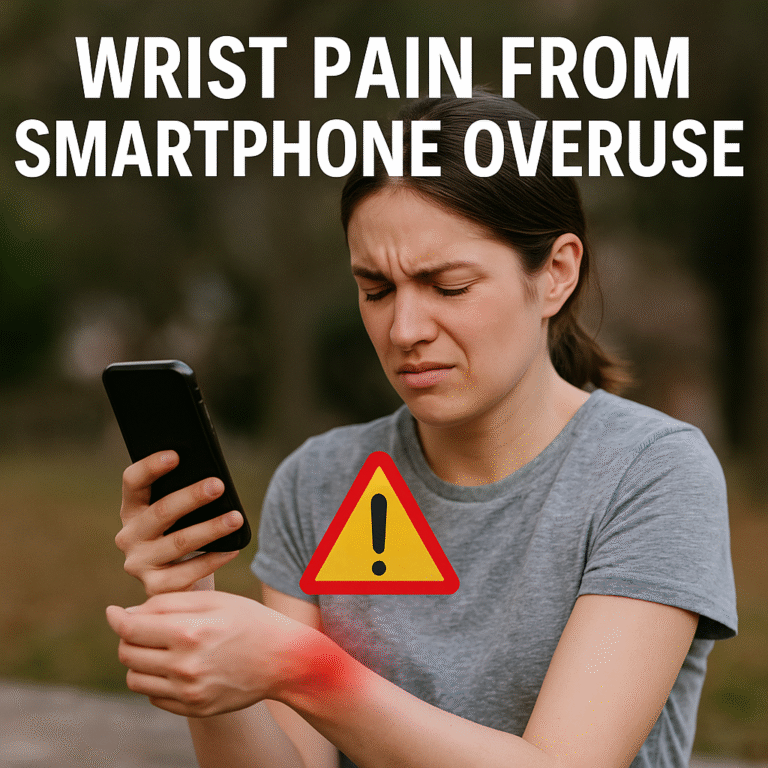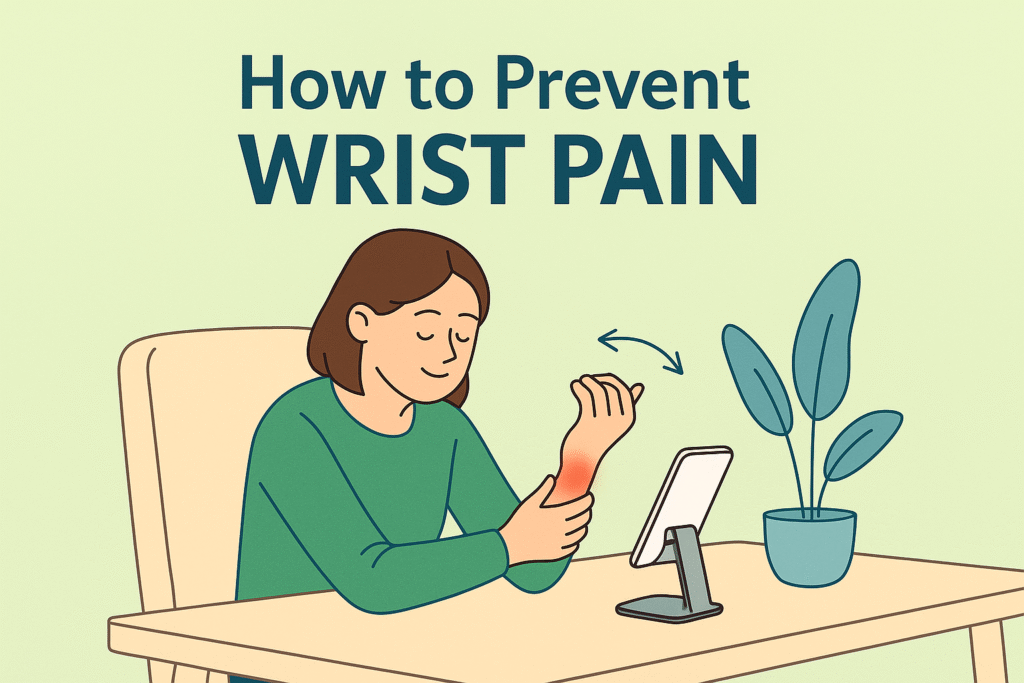Smartphone Overuse and Wrist Pain: What Doctors Want You to Know

📱 Smartphone Overuse and Wrist Pain: What Doctors Want You to Know
Quick Read: Smartphone overuse is causing wrist pain in kids and teens at alarming rates. If you’re noticing your child complaining about sore wrists after phone use, you’re not alone. Here’s what medical experts want parents to understand about this growing health concern.

🚨 The Rise of “Phone Wrist” in Young People
The Reality Check: Doctors are seeing more children and teenagers with wrist pain directly linked to heavy smartphone use. What used to be an issue mainly affecting office workers is now showing up in pediatric clinics across the country.
Why It’s Different for Kids: Unlike adults, children’s joints and tendons are still growing, making them especially vulnerable to overuse injuries. Kids spend hours scrolling, gaming, and texting in positions that put serious strain on their developing wrists.
Did You Know? Recent studies show that heavy phone users under 18 experience wrist discomfort at rates we’ve never seen before.
🔍 Understanding the Physical Impact
How Smartphone Use Affects Young Wrists
When kids use their phones, they hold them in what doctors call “the claw grip” – an awkward position that creates constant tension. Every swipe, tap, and scroll adds up to thousands of repetitive movements daily.
⚠️ Warning Signs to Watch For
Early Symptoms: • Aching thumbs and wrists that won’t go away • Weakness when gripping objects
• Sharp pains shooting up the forearm • Tingling or numbness in fingers • Difficulty with writing or opening jars
🚩 Red Flags Needing Medical Attention: • Pain lasting more than a few days • Numbness that doesn’t improve with rest
• Difficulty performing normal activities • Swelling around wrist or thumb • Pain that disrupts sleep
💡 Practical Prevention Strategies
✅ Simple Changes That Work
The good news? Most smartphone-related wrist problems are preventable with basic adjustments to device use.
Easy Fixes to Try Today:
- Take breaks every 20-30 minutes during phone use
- Hold devices at eye level instead of looking down
- Use both hands when possible to share the workload
- Try voice-to-text for longer messages
- Get a phone stand or holder
🏠 Building Better Habits at Home
Smart Environmental Setup: • Chairs with armrests to support arms • Good lighting to reduce hunching over screens • Regular movement breaks built into screen time • Phone-free zones during homework and meals
Parent Tip: Teaching kids to recognize early warning signs is just as important as preventing them. When discomfort starts, that’s break time – not push-through time.

🩺 Treatment Options for Mild Symptoms
At-Home Care That Actually Helps
For minor discomfort, these simple remedies can be surprisingly effective:
Immediate Relief: • Apply ice for 15-20 minutes when pain flares up • Gentle wrist stretches throughout the day • Ensure adequate sleep for healing • Temporarily reduce phone activities
Nutrition Support: • Anti-inflammatory foods like berries and fish • Stay hydrated • Limit processed foods that increase inflammation
👨⚕️ When to See a Doctor
Time for Professional Help When:
- Home care isn’t helping after 1-2 weeks
- Symptoms are getting worse despite rest
- Pain interferes with daily activities
- You’re worried about long-term damage
What to Expect: Physical therapy, ergonomic assessments, or temporary splinting might be recommended. Early intervention = better outcomes.

🎯 Long-Term Success Strategies
Why This Matters for the Future
The Big Picture: Smartphone-related wrist problems in children are largely preventable, but they require consistent good habits. The patterns kids develop now will stick with them into adulthood.
Schools Are Taking Notice: Some schools now implement movement breaks during digital learning and teach basic ergonomics alongside traditional health education.
🌱 Building Sustainable Digital Wellness
Most Successful Approach: Combine education with practical changes. When kids understand why these habits matter and have tools to implement them, healthy practices stick long-term.
Start Small, Build Up:
- Begin with one simple change (phone stand or stretch breaks)
- Add new habits gradually
- Make it fun, not restrictive
- Celebrate improvements along the way
🎬 The Bottom Line
Smartphone overuse and wrist pain don’t have to be inevitable parts of growing up digital. With awareness, simple prevention strategies, and quick action when problems arise, families can help kids enjoy technology while protecting their physical health.
Your Next Steps:
- Observe your child’s phone habits this week
- Try one prevention strategy from this list
- Have an open conversation about digital wellness
- Set up a more ergonomic phone environment
Remember: Small changes in daily habits now can prevent significant problems down the road. Your child’s future comfort and mobility are worth the effort.
✨ Key Takeaways: • Phone wrist is real and affecting more kids than ever • Prevention is easier than treatment • Simple environmental changes make a big difference
• Early intervention leads to better outcomes • Digital wellness is just as important as physical wellness
Comments